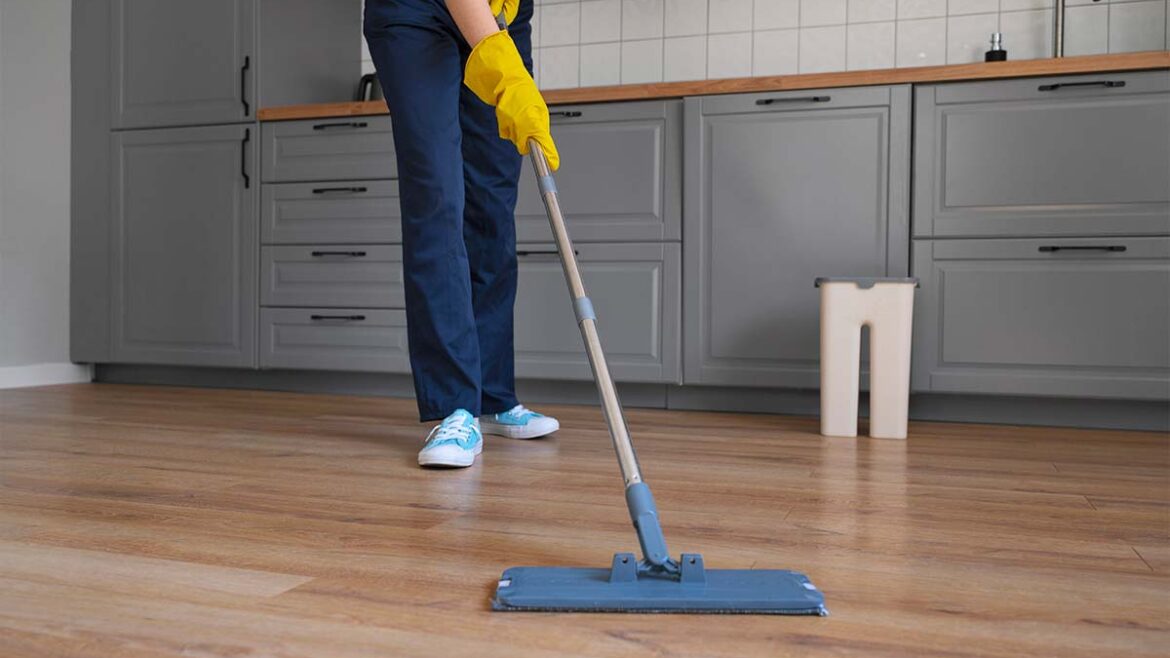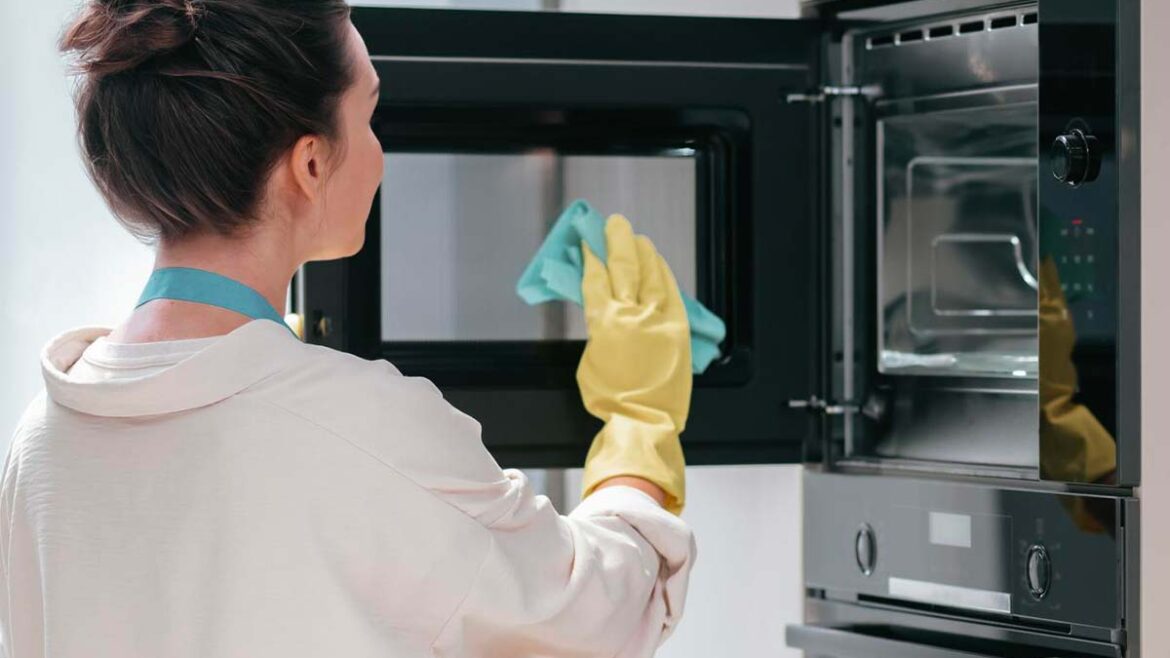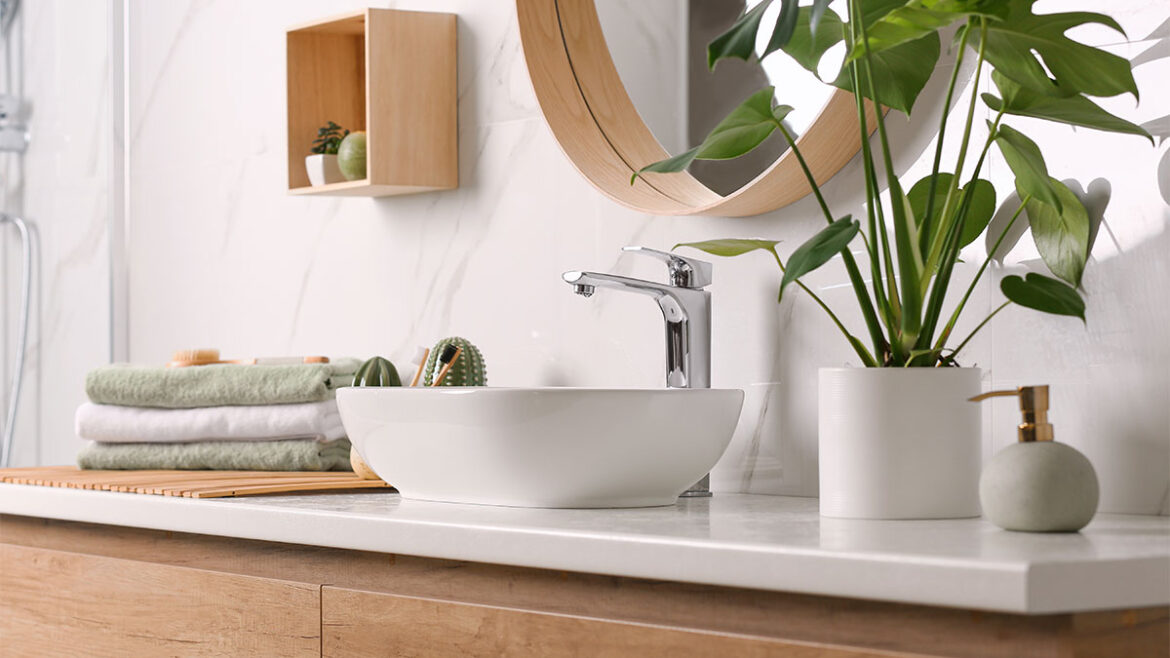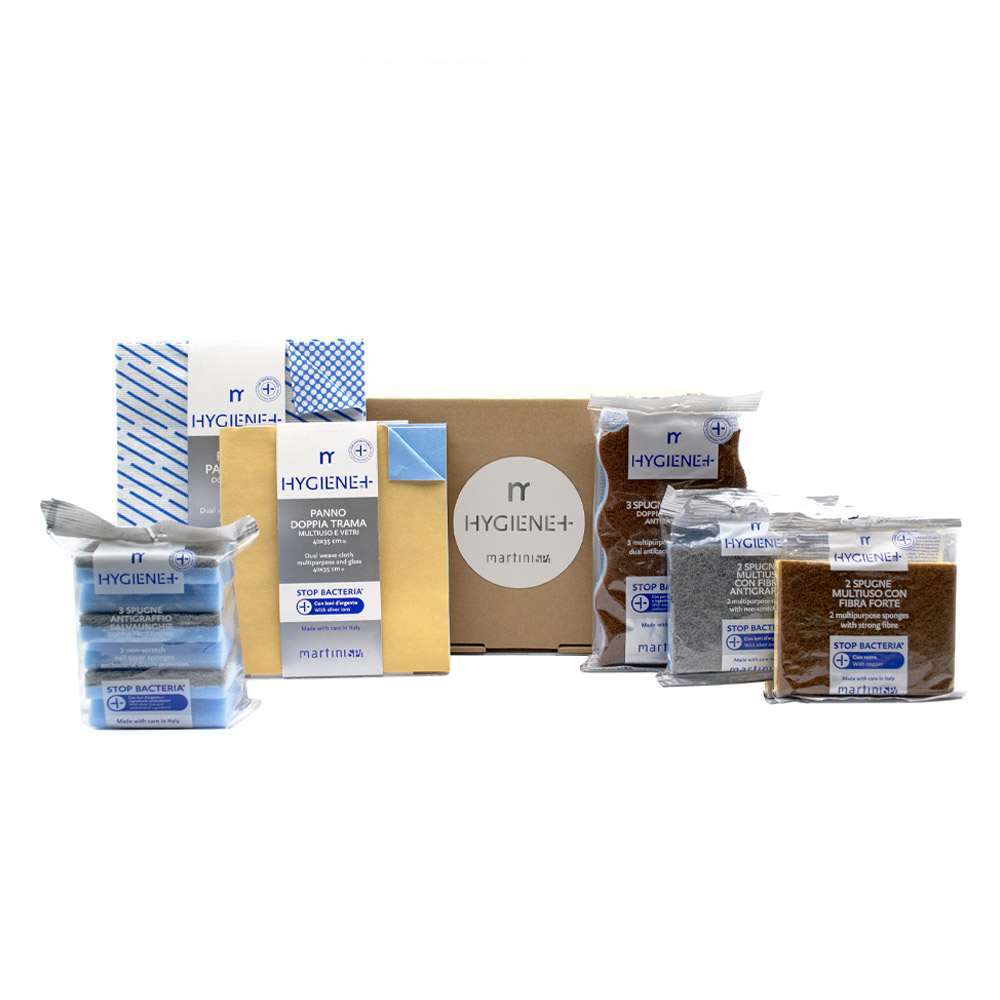How to clean floors: practical advice for every type of surface
Floor cleaning is an essential part of home care, but each type of surface requires special attention to avoid damage and ensure flawless results. In this article you will find out how to clean different types of floors using specific products and effective techniques to preserve their beauty and durability over time.
How to clean stoneware floors
Porcelain stoneware floors are extremely durable and versatile, but like any surface, they require proper cleaning to maintain their shine and resilience. The finish of stoneware resists scratches, stains, and moisture well, but it is important to prevent dirt and dust buildup that could damage the surface over time.
- Cleaning Method: before cleaning with water, sweep or vacuum to remove dust and debris. Then, use a damp cloth with a neutral detergent suitable for stoneware, avoiding acidic products that might damage the surface.
- Recommended Tools: the microfibre and cotton floor cloth from the MartiniSPA Utility line is ideal for cleaning stoneware. The microfibre captures dirt without scratching, while the cotton helps absorb moisture and leave the surface dry.
Additional Tip: for grout, use a soft brush and a solution of warm water and baking soda to remove stubborn dirt.
How to clean laminate floors
Laminate floors, while resistant, are particularly sensitive to moisture and excessive abrasion. The protective finish on laminate can be damaged if not handled carefully. Regular and gentle cleaning is essential to preserve its appearance.
- Cleaning Method: to prevent dust buildup, regularly vacuum with a suitable brush. When cleaning with a cloth, make sure to wring it out well before using it on laminate, as excessive moisture can cause the floorboards to swell. Use a laminate-specific detergent or a highly diluted neutral detergent solution.
- Recommended Tools: the bamboo and cotton floor cloth – Mr. Eco is perfect for laminate floors. Its softness and absorbency ensure delicate and safe cleaning.
- Additional Tip: Always clean following the direction of the laminate’s grain to avoid marks or streaks.
How to Clean Outdoor Floors
Outdoor floors, exposed to weather elements, accumulate dirt, leaves, and tough stains. It’s important to select robust yet gentle tools that won’t damage surfaces like tiles or natural stones.
- Cleaning Method: start with vigorous sweeping to remove leaves and debris. Then, use a damp floor cloth with a detergent specific for outdoor use. For tougher dirt, use a solution of warm water and white vinegar, which helps degrease and deeply clean, especially in areas with high exposure to sun or rain.
- Recommended Tools: the double-textured floor cloth from the Hygiene+ line is perfect for cleaning outdoor floors. The polka dot side allows effective scrubbing, while the striped side removes accumulated grease and dirt.
- Additional Tip: use a pressure washer once or twice a year for a deep clean and to remove persistent deposits.
How to clean ceramic floors
Ceramic floors are common in many homes due to their durability and versatility. However, using the wrong products or insufficient cleaning can leave streaks or damage the shiny surface.
- Cleaning Method: start by vacuuming or sweeping away dust. Then use a damp cloth with warm water and a neutral detergent specific for ceramics. Avoid products containing acids or ammonia that might discolor or damage the surface.
- Recommended Tools: the microfiber and cotton floor cloth from the Utility line is ideal for this type of floor. Microfiber removes dirt without leaving streaks, while cotton helps quickly dry the surface.
- Additional Tip: after cleaning, use a dry cloth to remove any water or detergent traces, keeping the surface shiny.
How to clean marble floors
Marble is a very delicate natural stone that requires specific treatments to maintain its luster and resilience. Using the wrong products can corrode or stain it, so it’s crucial to choose the right cleaning method.
- Cleaning Method: avoid acidic or abrasive detergents. Use a damp cloth with lukewarm water and a neutral detergent specific for marble. Ensure no water residue is left on the floor, as it can cause streaks or stains.
- Recommended Tools: the bamboo and cotton floor cloth from Mr. Eco is the best choice for marble floors. Its softness prevents scratches and marks, while the bamboo’s absorbency ensures safe cleaning.
- Additional Tip: for a deeper treatment, use a specific marble wax once every 6–12 months to protect the surface and maintain its luster.
How to clean wooden floors
Wooden or parquet floors add warmth and charm to any room, but they are particularly sensitive to moisture and chemicals. Gentle and regular cleaning is key to keeping them intact.
- Cleaning Method: vacuum with a soft brush to remove dust and debris. Then use a lightly damp, well-wrung cloth to avoid over-wetting the wood. Use a parquet-specific detergent or a highly diluted neutral soap solution. Avoid excessive water and overly aggressive detergents.
- Recommended Tools: the bamboo and cotton floor cloth from Mr. Eco is perfect for wood, thanks to its delicacy and ability to absorb moisture without leaving traces.
- Additional Tip: to keep wood shiny and protected, apply a nourishing parquet product once or twice a year.
MartiniSPA products for cleaning floors
MartiniSPA offers a range of floor cloths designed to ensure effective cleaning on any type of surface, combining innovation, sustainability and hygiene:
- Two-in-one floor cloth, Utility line: a versatile microfibre and cotton cloth, perfect for daily cleaning all floors. This cloth is suitable for those looking a simple but effective product for home maintenance.
- Double weave floor cloth, Hygiene+ line: a cloth with due to different for targeted cleaning. The polka dot side is ideal for rub, while the striped one removes grease and stubborn dirt. Thanks to the antibacterial ingredients inserted into the fibre, this cloth helps maintain hygiene and freshness over time.
- Bamboo and cotton floor cloth, mr line. Echo: Made with biodegradable and natural materials like bamboo, this cloth is ideal for those who want to take care of the home while respecting the environment. It is super absorbent, scratch-proof and delicate on all surfaces, including the most delicate floors such as parquet.
MartiniSPA Products for Floor Cleaning
MartiniSPA offers a range of floor cloths designed to ensure effective cleaning on any surface, combining innovation, sustainability, and hygiene:
- Two-in-one floor cloth, Utility line: a versatile cloth in microfiber and cotton, perfect for everyday cleaning of all floors. This cloth is suitable for those seeking a simple yet effective product for domestic maintenance.
- Double-texture floor cloth, Hygiene+ line: a cloth with two different sides for targeted cleaning. The polka dot side is ideal for scrubbing, while the striped side removes grease and stubborn dirt. The antibacterial ingredients embedded in the fibers help maintain hygiene and freshness over time.
- Bamboo and cotton floor cloth, Mr. Eco line: made with biodegradable and natural materials like bamboo, this cloth is ideal for those who want to care for their home while respecting the environment. It’s super absorbent, scratch-resistant, and gentle on all surfaces, including delicate floors like parquet.
Conclusion
Cleaning floors has never been easier, thanks to MartiniSPA products designed to meet the needs of every type of surface. Whether you need to clean stoneware, marble, or wood, choose the most suitable floor cloth to achieve brilliant and lasting results.



